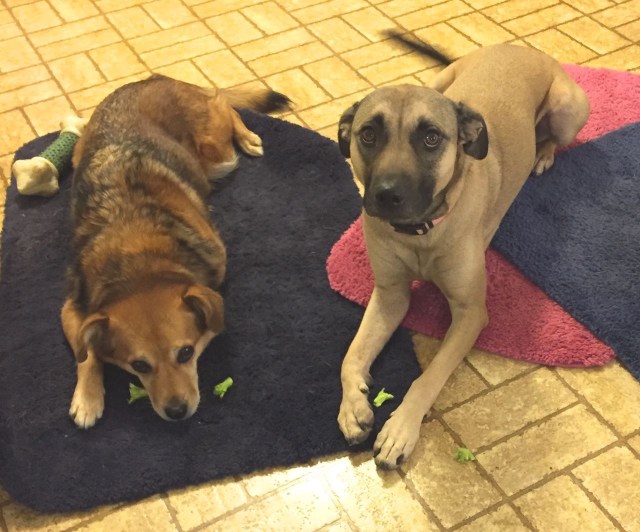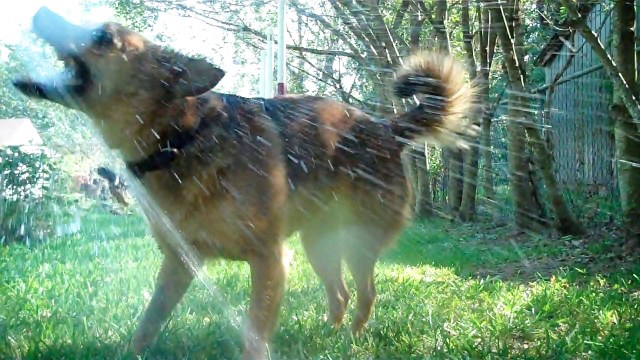Barks Blog
The Dog Decides
“The dog decides what is reinforcing.” Positive reinforcement trainers frequently say that to their human students. What they mean is that people can easily be mistaken about whether something constitutes reinforcement. For instance, we may think praising or petting our dogs are reinforcers, but if they do not cause behavior to increase or maintain, they are not.
Dogs don’t sit down and make cognitive “decisions” about reinforcers; that’s just a semantic shortcut. But their subsequent behavior is what tells us whether something is a reinforcer or not. If you give your dog a piece of chicken each time she sits and she sits more, yep, that chicken is reinforcing. If instead you give her a few gentle taps on the head when she sits and she doesn’t sit more, or only sits a little more, then that tap is not a reinforcer, or is a very weak one. She might even sit less, in which case the head tap is punishing.
It’s not only newbies who need this reminder. It’s very easy to get it stuck in one’s head that something ought to be a good reinforcer. Sometimes it takes a while for our powers of observation to kick in and tell us, for example, that no, popcorn is just not reinforcing for this particular dog.
The way we tell whether something is reinforcing is to look for an increase in the relevant behavior.
The Dog Decides Whether “Special” Collars are Aversive
Some trainers who use aversive methods, particularly prong and shock collars, are starting to use a similar phrase with the result of further muddying the waters about aversives. Just to be sure, let’s review the meaning of aversive stimuli, or aversives.
Paul Chance, in Learning and Behavior, 7th edition, defines aversives as:
Stimuli the animal would avoid, given the option.
That’s a straightforward definition. But I have now started to read remarks from trainers who use prong and shock collars seeking to defend their use by saying that “the dog defines what is aversive.”
Uh.
That is true. But the implication that such collars can work without being aversive is dead wrong.
Shock and prong collars work via positive punishment and negative reinforcement. They can be used to punish unwanted behavior (positive punishment). They can also be used to coerce desirable behavior (negative reinforcement). If you need a brush-up on this terminology, check out my post: Operant Learning Illustrated by Examples. To counter some of the common BS about aversive use, you can also check this post out: It’s Not Painful. It’s Not Scary. It Just Gets the Dog’s Attention!
So yes indeed. The dog decides what is aversive. And just as with reinforcement, the way we determine whether something is aversive is to see if it changed behavior, in this case via positive punishment or negative reinforcement.
If the dog “decides” that a shock or prong collar is not aversive, that collar will not work to change behavior. It’s as simple as that.
Why Bother with These Definitions?
People write about this stuff a lot on Internet articles, comment sections, and discussion groups. I read a fair amount of it. I have a drive to clarify things and an urge to get people using a common terminology. I personally learn a lot by writing about it. I also want to persuade people, in an up-front and honest way, to consider and perform more humane training.
I’m aware of the research that says that even rational arguments can backfire and make people more entrenched in their beliefs. I frequently consider whether I should even write these pieces. But the people who are dedicated to using aversive tools are not my audience. The thousands reading on the sidelines going, “Hmmmm” are.
I get positive feedback from those people. I also get lots of positive feedback from trainers who use my articles to help explain concepts to their students who are learning about positive reinforcement-based training in real life. That feedback, knowing that my articles are useful in the sense that I intend them, is positive reinforcement for me. So I continue.


